It’s impossible to imagine the world of guitars without Fender’s Big Four—the Telecaster, Stratocaster, Jazzmaster, and Jaguar.
But what about the other electrics the company has made through the years, from Fender’s ’50s origins to its mighty status today?
Here’s a selection of some of the rest of Fender, from should-have-beens to sleeping giants, from starter solids to high-end hollows. There’s plenty here to attract your attention. And even, perhaps, a few surprises tucked away and awaiting fresh discovery.
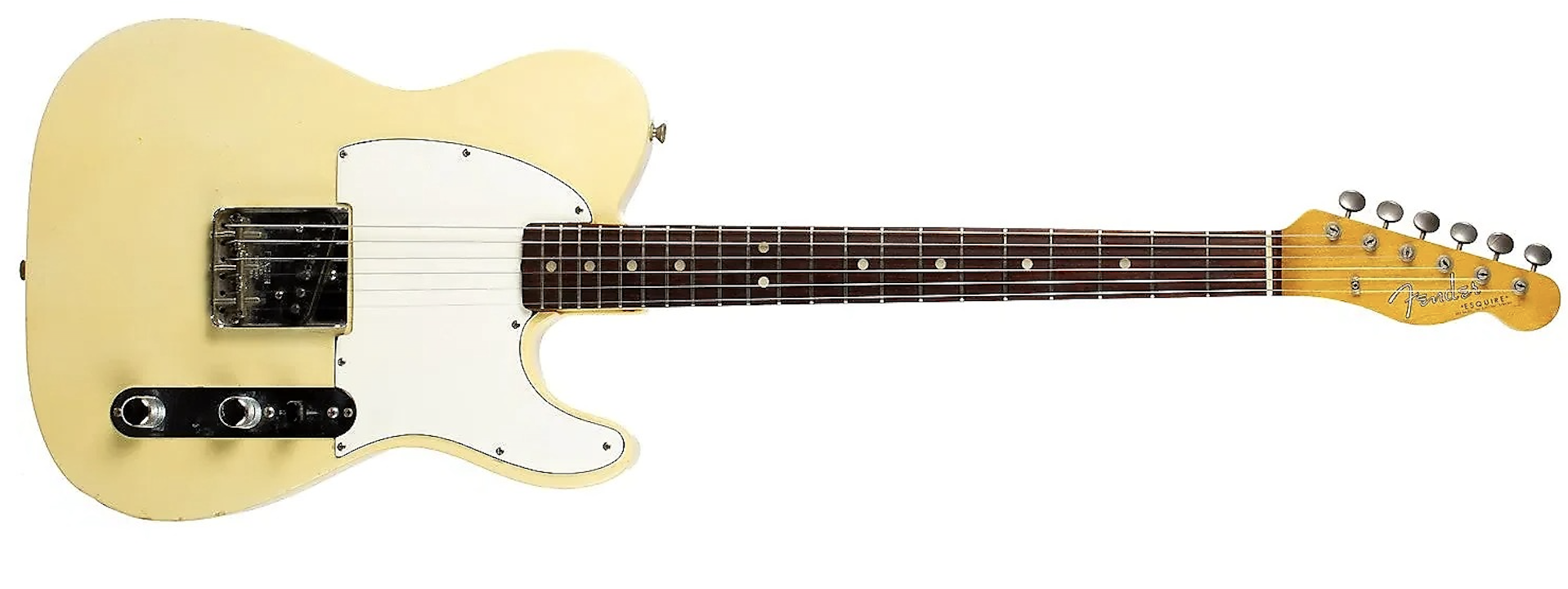
"Esquire" was Fender’s very first model name for its new solidbody electric introduced at the start of the 50s. A number of changes meant that the two-pickup version was named the Broadcaster, then Telecaster, while the Esquire became the single bridge-pickup version. It had a fretted maple neck until 1959, then a rosewood fingerboard (1959–69) with occasional maple option.
Later Alternatives: Esquire MIJ, Classic Series ’50s Esquire, 70th Anniversary Esquire.

Fender called this a "three-quarter size" budget model and aimed it at budding guitarists "with small hands" learning to play. The 21-fret single-pickup Musicmaster in its initial guise (1956–64) had a short scale, at 22.5 inches, and an anodized pickguard. It was modified (1964–75) with a larger headstock, its controls now on a metal plate. That second type was available as a 22-fret 24-inch medium-scale option, also known as the Musicmaster II. The final, third type (1975–80) had the controls back on an integrated pickguard.

Accompanying the "three-quarter-size" Musicmaster was a two-pickup version, the Duo-Sonic, a second budget model intended for beginners. The pickup arrangement identifies the two types of Duo-Sonic: the first version (1956–64) has only the neck pickup angled, while both are angled on the second type (1964–69) , which also has a larger headstock and a pair of sliders replacing the original three-way. Scale-length and fret options follow those for the Musicmaster.
Later Alternatives: Traditional Duo-Sonic MIM, Offset Series Duo-Sonic (also HS), Player Duo-Sonic (also HS).
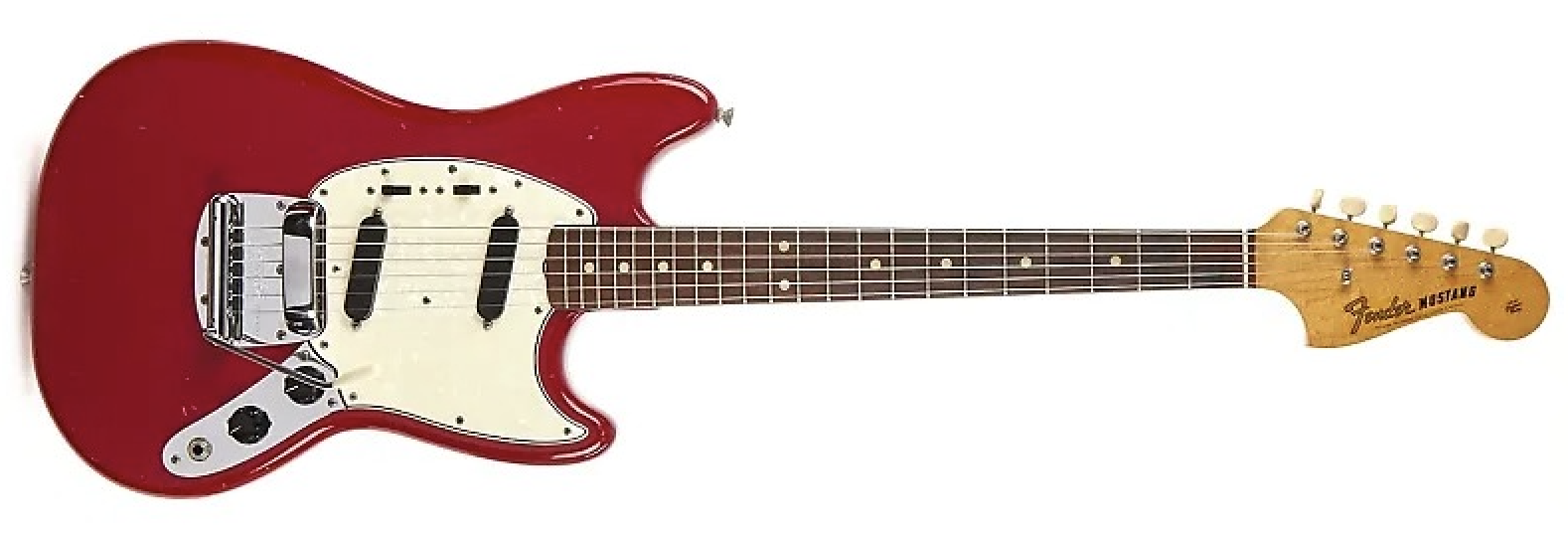
Third in Fender’s budget "three-quarter-size" line for those starting to play was the Mustang, in effect the two-pickup Duo-Sonic with a vibrato bridge. And as with the Duo-Sonic, the Mustang’s scale-length and fret options follow those for the Musicmaster of the relevant period. Beyond the basic colors, there were two distinctive finish versions: the shaded Antigua Mustang (1977–79) and the striped Competition Mustang (1969–73).
Later Alternatives: MG MIJ reissues, Classic Series ’65 Mustang, American Special Mustang, Offset Mustang (also 90), American Performer Mustang, Vintera ’60s Mustang, Player Mustang (also 90).
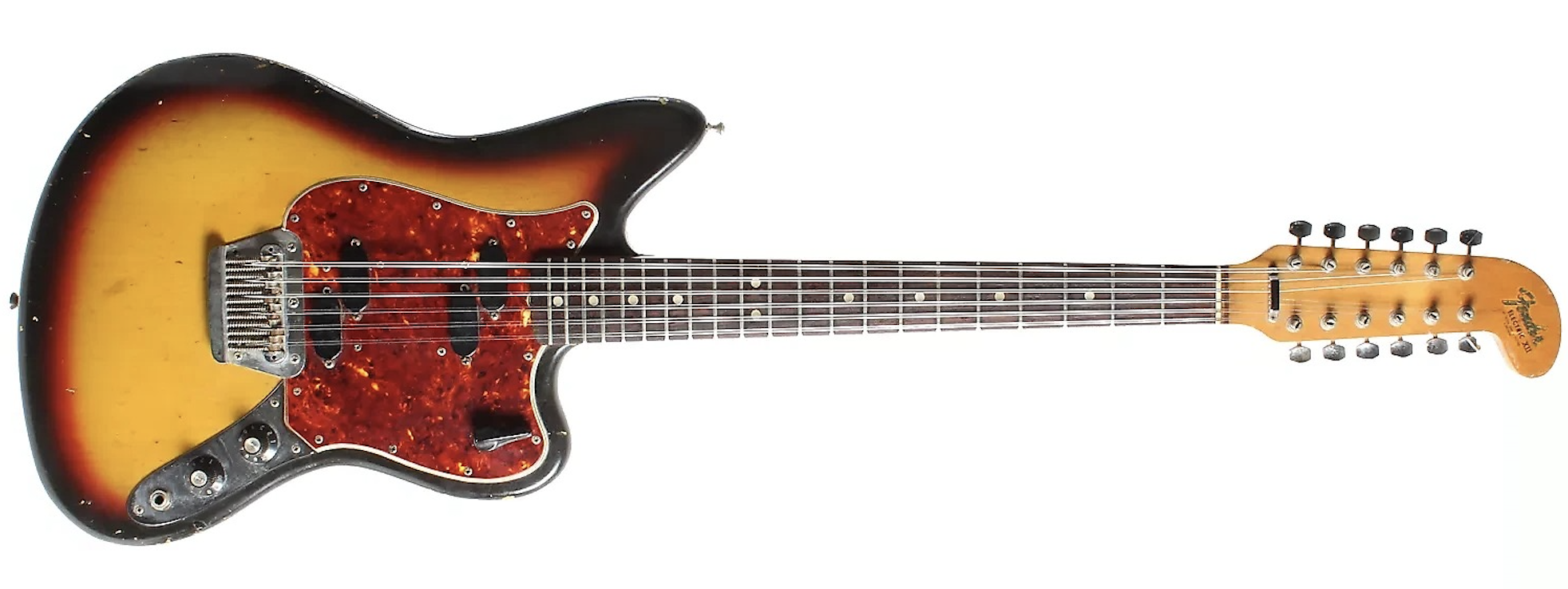
Fender launched the solidbody XII at the height of a fad for electric 12-strings, using a Jazzmaster/Jaguar-style body but necessarily extending the headstock, nicknamed the hockey-stick for its shape, in order to accommodate the extra tuners, and adding a clever 12-saddle bridge. The XII gained neck binding later in 1965 and the following year its dot markers were replaced by blocks.
Later Alternatives: Alternate Reality Electric XII.

The Coronado guitars were Fender’s first thinline hollowbody electrics, designed by Roger Rossmeisl, who had designed Rickenbacker’s best known instruments. At first, there were three models (1966-69): the six-string Coronado I, with single pickup at the neck, and two-pickup II, plus the XII 12-string. Beyond the regular colors, the II and XII also came in two striking finish options: Antigua (shaded white-to-brown, 1967–72) and Wildwood (dye-injected beech, 1967–69).
Later Alternatives: Modern Player Coronado.

Fender’s late-’60s addition to its budget line for beginners was the Bronco, another relatively straightforward guitar with single bridge pickup and a basic vibrato bridge, and with a medium Fender scale of 24 inches. At first, the guitar was also offered as a set with a matching Bronco amp.
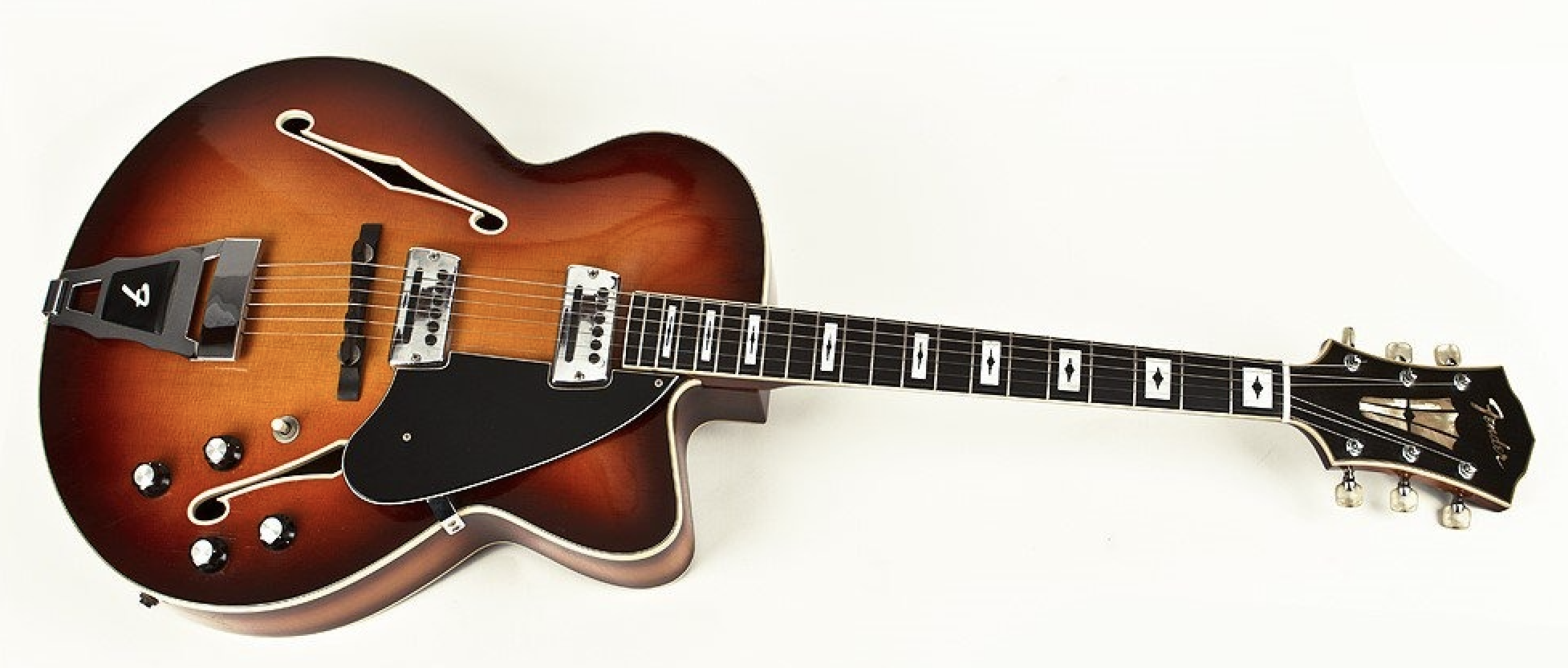
Following the Coronado thinlines, Roger Rossmeisl devised a full-depth hollow electric, the Montego, which came in single (I) or two-pickup (II) versions. The high-end Montego models were by far the most expensive models in Fender’s catalogue at the time, along with Rossmeisl’s related LTD, effectively an acoustic hollowbody that had a single floating pickup with pickguard-mounted controls.
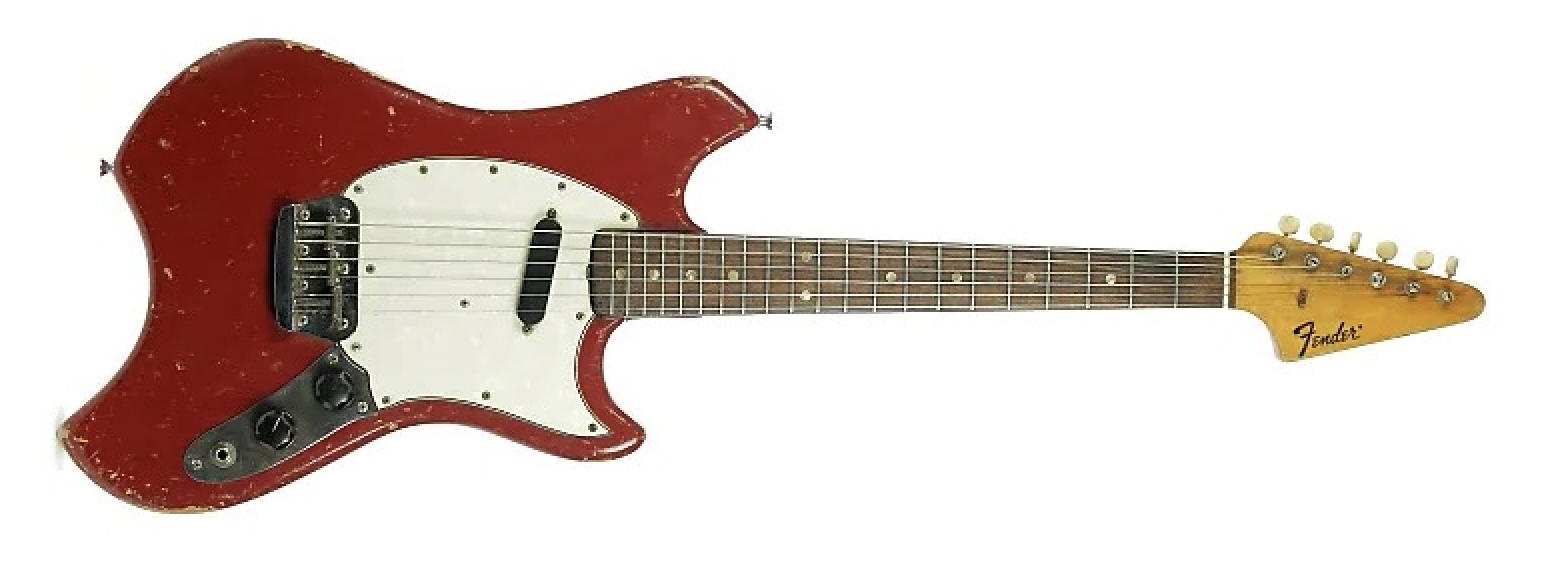
Under CBS, which owned Fender from 1965, some economies at the factory led to a pair of models devised to use up spare parts. For the Swinger (aka Arrow, Musiclander), Babe Simoni at Fender put together Musicmaster, Bass V, and Mustang parts, adding a curve to the body base and giving the headstock an arrowhead shape. For the six-string Custom (aka Maverick), Simoni carved Electric XII bodies to a revised shape, added a Mustang vibrato and a XII neck. Neither lasted long in Fender’s lines.
Later Alternatives: MIJ Swinger Single Pickup/Double Pickup, Parallel Universe Volume II Maverick Dorado.

Following the lack of success with the Coronado models, Fender tried again in the mid ’70s with a new thinline electric, this time a humubucker-equiped semi-solid in the general style of Gibson’s popular ES models. It had a 335-like maple center-block through the otherwise hollow body, but kept Fender’s regular bolt-on neck. Gene Fields at Fender designed a capable instrument that would be more widely recognized for its quality in later years.
Later Alternatives: Modern Player Starcaster.

Gregg Wilson and John Page at Fender R&D designed these short-lived new starter guitars intended to replace the obsolete Musicmaster, Duo-Sonic, and Bronco and the soon-to-be-dropped Mustang. The Lead models were simple double-cut solids, the one-humbucker I (1979–82), two-single-coils II (1979–83), and two-humbucker III (1979–83) with coil-selector. Still US-made, the Leads were not budget enough and struggled to compete with other brands’ cheaper imports.
Later Alternatives: Player Lead II, III.
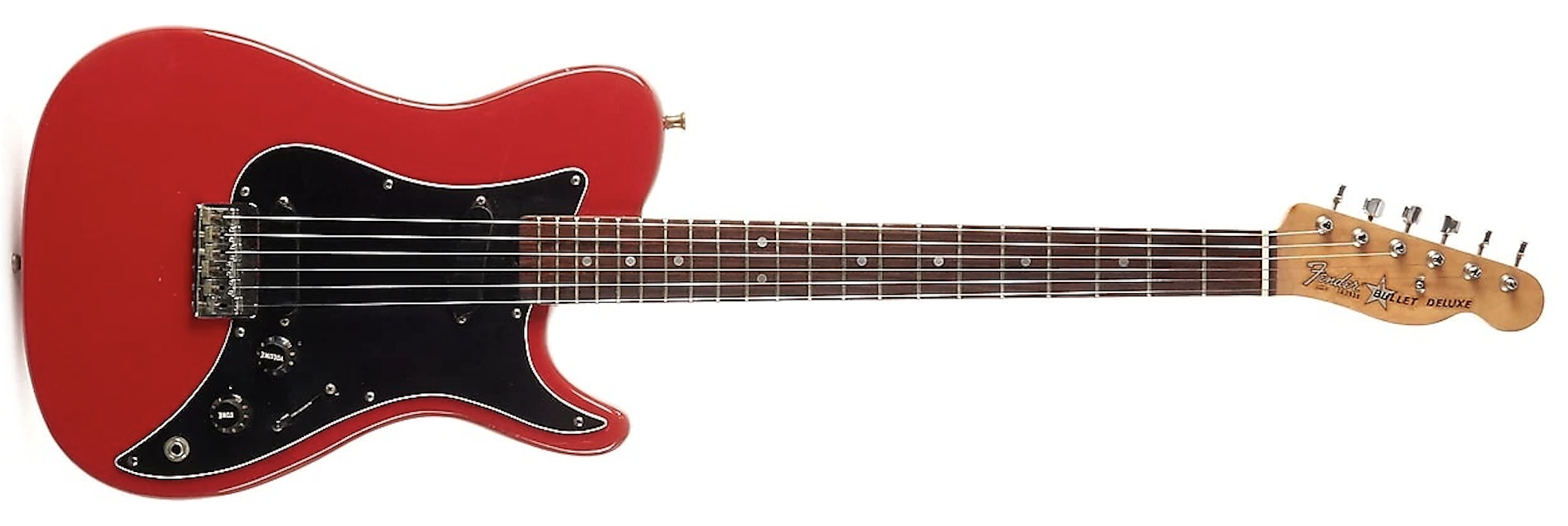
Following market resistance to the cost of the Lead models, Fender decided for the first time in their history to attempt offshore production for the new budget Bullets. They tried Korean manufacturing, then assembling Korean parts in the US, but quality problems remained, and the Bullets shifted to full American production. The Bullet and Bullet Deluxe (1981–83) were single-cut models, each with a pair of single-coils, the Deluxe with through-body stringing. Several double-cut versions replaced them (1982–83): Bullet (two single-coils); S-2 (aka Deluxe, two single-coils, through-body stringing); S-3 (aka Deluxe III, three single-coils); H-1 (aka II, humbucker); H-2 (aka Deluxe II, two humbuckers).

Fender Japan was formed in 1982, manufacturing at the renowned Fujigen factories, and among its new products was the Master Series, intended to compete with Gibson and comprising three model groups. They were the first Fenders with Gibson-style set necks. The electric archtop D’Aquisto models—floating-pickup Ultra and two-pickup Standard (both 1984–87) and single-pickup Elite (1984–93)—had design input from the American luthier Jimmy D’Aquisto. The thinline Esprit and slightly smaller Flame (both 1984–87) were chambered double-cut guitars in Standard, Elite, and Ultra versions featuring new-design pickups, hardware, and switching.

Dealers pressured Fender to come up with a model to compete with the fashion for unusual body shapes in the ’80s, and the Japan-made Katana was the result of Fender’s Dan Smith messing with his Mac design software. The wedge-shape body had two humbuckers and locking vibrato, but the model was soon dropped, disliked by some for being "un-Fender."
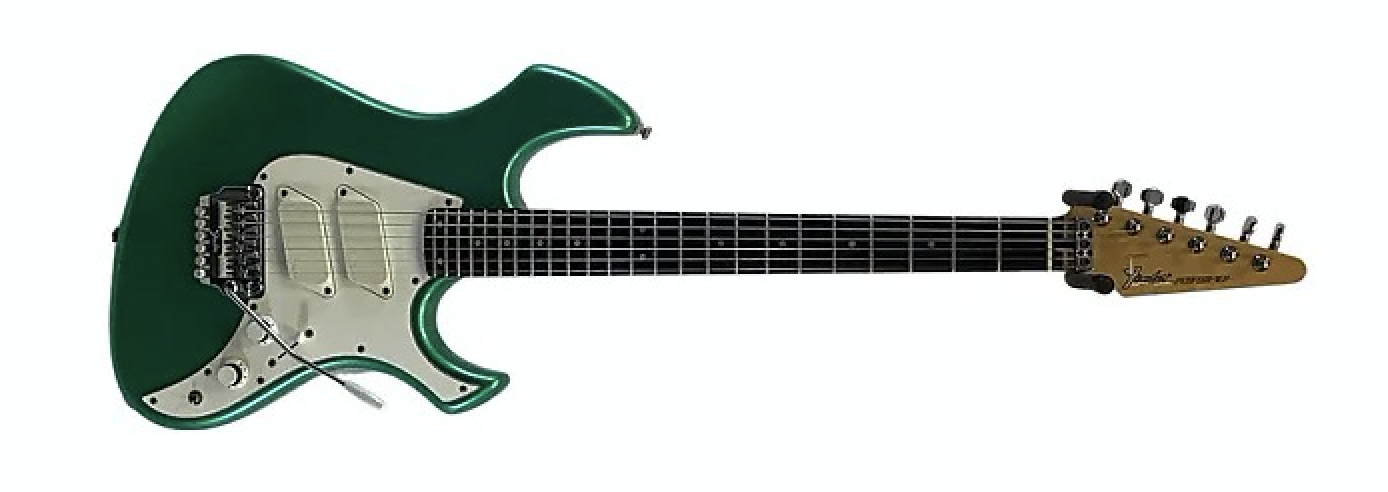
Fender’s John Page devised the Performer, a radical design for the firm that was meant to compete with the ’80s superstrats popularized by Ibanez, Kramer, and others. Intended for US production, it was switched to Fender Japan’s Fujigen factories following the uncertainties surrounding CBS’s sale of Fender. The Performer was an impressive guitar, with angular styling, 24-fret neck, two humbuckers, and locking vibrato, but it was dropped amid the moves to new onwership. (The Performer model should not be confused with the much later American Performer series.)

A further model intended to compete with the popular superstrat style of the era, the Prodigy (1991–93), although officially US-made, was one of the first Fenders to receive attention at the company’s new Mexican factory, just over the California/Mexico border at Ensenada. The offset body had sharper horns than a Strat, two single-coils and a humbucker, and a vibrato bridge, with the Prodigy II (1991–92) adding a locking vibrato.

Heartfield was a new brandname for a line of Fender Japan guitars jointly designed in the US and Japan and made by Fujigen, with examples bearing combinations of "Fender" and "Heartfield" on the headstock face or rear. Models included the superstrat Talon and EX, the PRS-meets-Ibanez Elan, and the retro-styled RR.

Fender’s first modern mashup was the Jag-Stang, originally concocted by Kurt Cobain and Larry Brooks at Fender. Kurt cut up pictures of his favorite Jag and Mustang and pasted them together to create a new look, while Larry steered the results to something Fender could produce. Following Kurt’s death in 1994, his family collaborated with Fender to release a Japan-made production model, the Jag-Stang, aptly described in promo material as "a collision of contemporary features fused together to create a combination of Jaguar and Mustang."
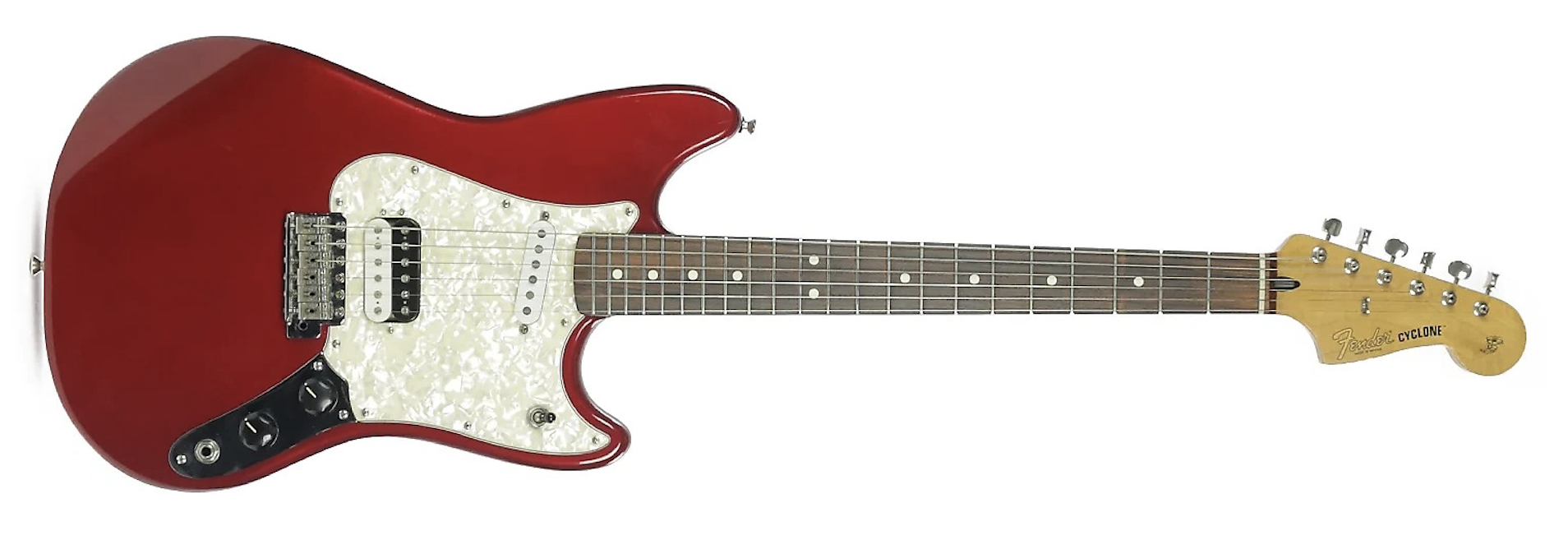
Fender’s Cyclone model (1998–06), was a Mexico-made Mustang derivative with medium scale, a humbucker at the bridge and angled single-coil at the neck, and a Strat-like vibrato. The Cyclone II (2003–06) revived the earlier Competition Mustang’s striped-finish body, adding three Jag-style single-coils and control panel, while the Cyclone HH (2003–06) offered a pair of humbuckers.

Made in the Mexico factory, the original Toronado (1998–2006) with its Jag/Jazz body style had a medium scale, twin humbuckers, a Gibson-style four-controls-and-selector layout, and through-body stringing, while the similar HH version (2005–06) had a bridge and separate tailpiece. There were three US-made models (2002–04), the Toronado DV II (aka DE-9000, with P-90s) and Toronado HH (humbuckers) in the American Special series, and the Highway 1 Toronado (two controls and selector). Finally, the Korean-made Toronado GT (2005-06) added some go-faster body stripes.
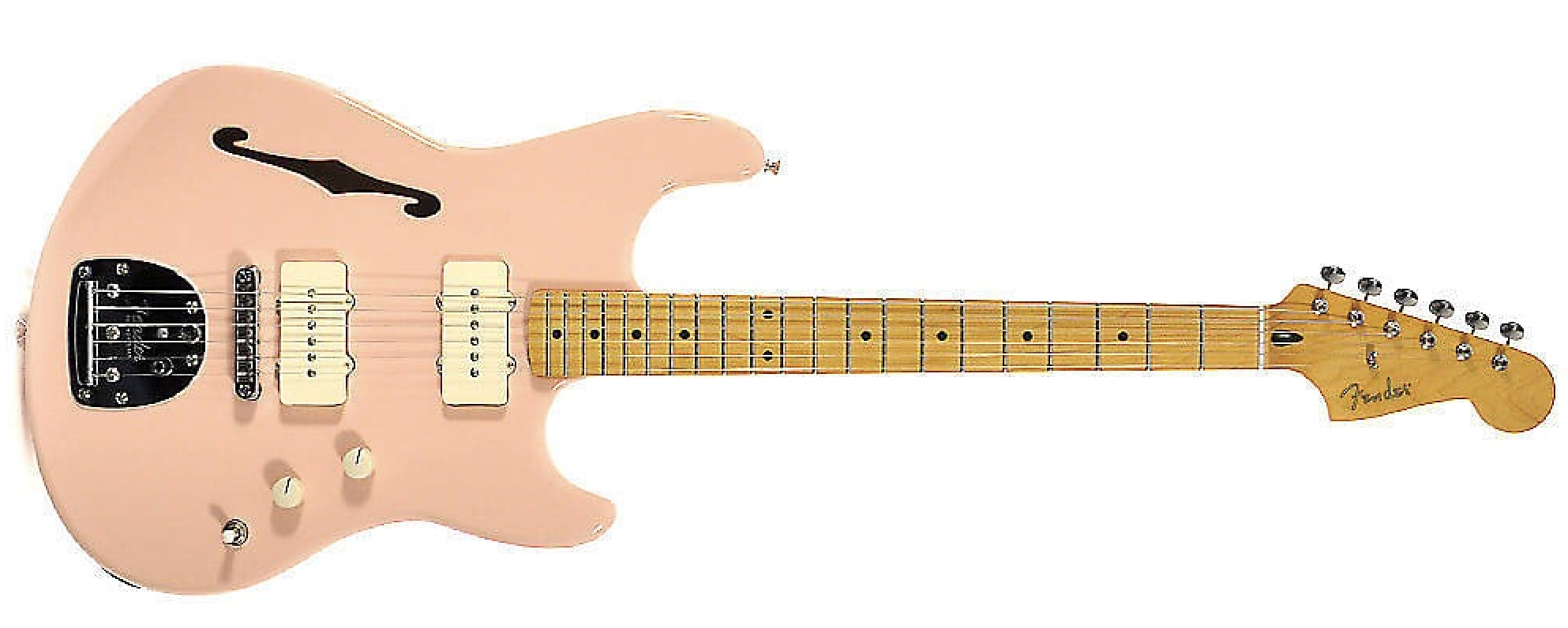
Fender’s Pawn Shop series marked the company’s first move to group together a line of mashup models for extra promo power. The tagline, "Guitars that never were but should have been," summed up the idea well. The first batch in 2011 included the ’51 (based on an earlier Squier model that morphed P-Bass and Tele) and Mustang Special (a Mustang/Tele Deluxe/Jazzmaster mix). The 2012 set included the Offset Special (Thinline f-hole meets tweaked Strat meets Jazzmaster-vibe pickups and trem) and the Jaguarillo (a sort of three-pickup Jag). Finally, the 2013 Pawn Shop guitars included the Super-Sonic (another Squier revival, now with angled humbuckers).

The original Marauder was a genuine never-was guitar, prototyped in a few forms and even making a ’60s Fender catalogue, but ultimately shelved. The company’s China-made Modern Player series adopted the old model name for a new guitar with a retro-vibe shape and an intriguing triple-bucker at the bridge coupled with a Jazzmaster-style neck pickup.

The Meteora is one of the most recent Fender newcomers, a kind of space-age elongated Jazzmaster conjured from the mind of Fender designer Josh Hurst. It first appeared with Tele-style pickups in 2018 as part of a further conglomeration of mashup models, the US-made Parallel Universe series (2018). Next, it turned up in the Alternate Reality series from the Mexico factory (2019), now with humbuckers, and then morphed into a Mexico-made Player Plus model, the Meteora HH (2022–current), keeping the humbuckers and adding a vibrato.
About the author: Tony Bacon writes about musical instruments, musicians, and music. His books include The Fender Electric Guitar Book and Legendary Guitars. Tony lives in Bristol, England. More info at tonybacon.co.uk.
